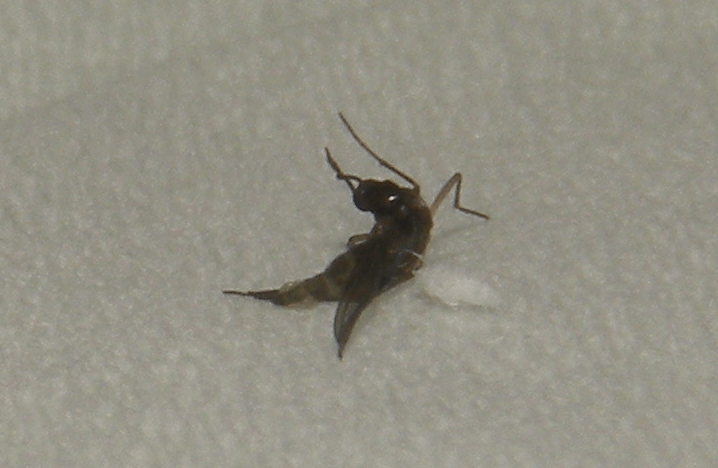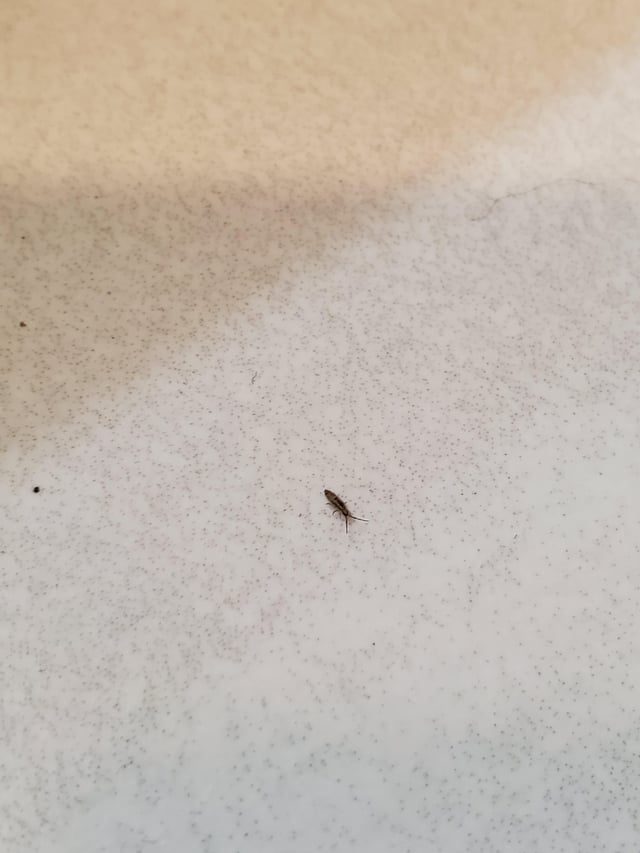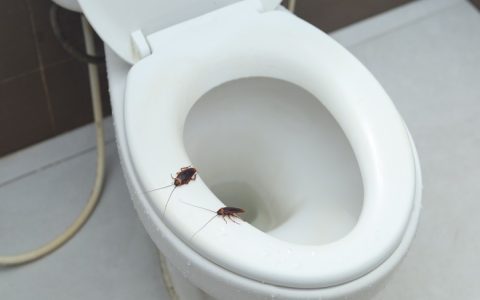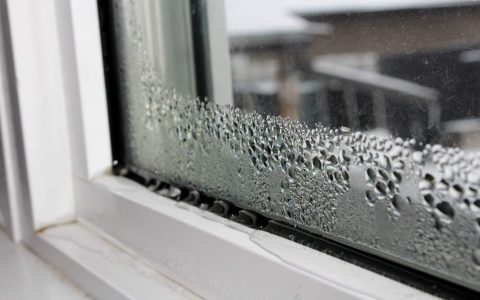Bathrooms, with their inherent moisture and potential for organic buildup, can unfortunately become attractive habitats for various small black insects. Identifying the specific pest is the first step towards effective control and maintaining a hygienic environment.
Common Small Black Insects Found in Bathrooms
Several types of small, dark-colored insects may be encountered in bathroom settings. Here are some of the most common:
Drain Flies (Moth Flies)

Drain flies, also known as moth flies, are small, fuzzy insects, typically 1.5-5mm long. They have a dark grey or black body and characteristic hairy wings that are held roof-like over the body when at rest. They are often seen on walls or near sinks, showers, and floor drains.
- Cause: Larvae develop in the gelatinous slime and organic matter that accumulates inside drains, overflow pipes, and septic tanks.
- Control:
- Thoroughly clean drains using a stiff brush and an appropriate drain cleaner or a mixture of baking soda and vinegar followed by hot water.
- Regularly flush drains with boiling water to break down organic buildup.
- Ensure P-traps are functional and maintain their water seal.
Fungus Gnats
Fungus gnats are tiny, dark, mosquito-like insects, about 2-3mm long, with long legs and antennae. They are weak fliers and are often found hovering around houseplants or damp areas. While commonly associated with plants, they can also thrive in other consistently moist bathroom environments.
- Cause: Larvae feed on fungi, algae, and decaying organic matter present in overly moist soil, damp window sills, or areas with persistent condensation and mold growth.
- Control:
- Reduce overall moisture in the bathroom by improving ventilation.
- If houseplants are present, allow the soil to dry out between waterings.
- Clean any areas exhibiting mold or mildew growth.
- Repair leaks contributing to dampness.
Springtails
Springtails are very small (0.25-6mm), wingless insects that get their name from their ability to jump when disturbed, using a spring-like appendage (furcula) tucked under their abdomen. They can vary in color, with some species appearing dark grey or black.

- Cause: They are attracted to high humidity, mold, mildew, and decaying organic matter. Common locations include damp areas under sinks, around leaky pipes, beneath loose tiles, or in damp grout.
- Control:
- Decrease humidity levels using exhaust fans, dehumidifiers, or by opening windows.
- Promptly repair any water leaks.
- Thoroughly dry out persistently damp areas.
- Clean away any visible mold or mildew.
Ants
Certain species of ants, such as little black ants, are small and dark. They may enter bathrooms in search of moisture or food sources, which can include toothpaste residue, soap scum, or even other dead insects.
- Cause: Foraging for water or food. They may also seek nesting sites in damp wood or wall voids if conditions are favorable.
- Control:
- Maintain a clean bathroom, ensuring no food particles or sugary residues are left exposed.
- Wipe up spills immediately.
- Seal cracks, crevices, and other potential entry points around pipes, windows, and baseboards with caulk.
- Use ant baits if an infestation is present, placing them along ant trails but out of reach of children and pets.
General Prevention and Control Strategies
Preventing small black insects in your bathroom largely involves controlling moisture and eliminating their food sources:
- Ventilation: Use an exhaust fan during and for at least 20-30 minutes after showers and baths. If no fan is present, open a window.
- Regular Cleaning: Clean all bathroom surfaces, including floors, sinks, tubs, and showers, regularly to remove soap scum, hair, and other organic debris. Pay special attention to drains.
- Fix Leaks: Promptly repair any dripping faucets, leaking pipes, or issues with shower or tub seals to reduce moisture availability.
- Seal Openings: Seal cracks and gaps around plumbing fixtures, baseboards, windows, and tiles to deny insects entry points and hiding spots.
- Reduce Clutter: Minimize clutter, especially on the floor or under sinks, as it can provide hiding places for pests and trap moisture.
- Manage Waste: Empty bathroom trash cans regularly, especially if they contain food waste or damp materials.








